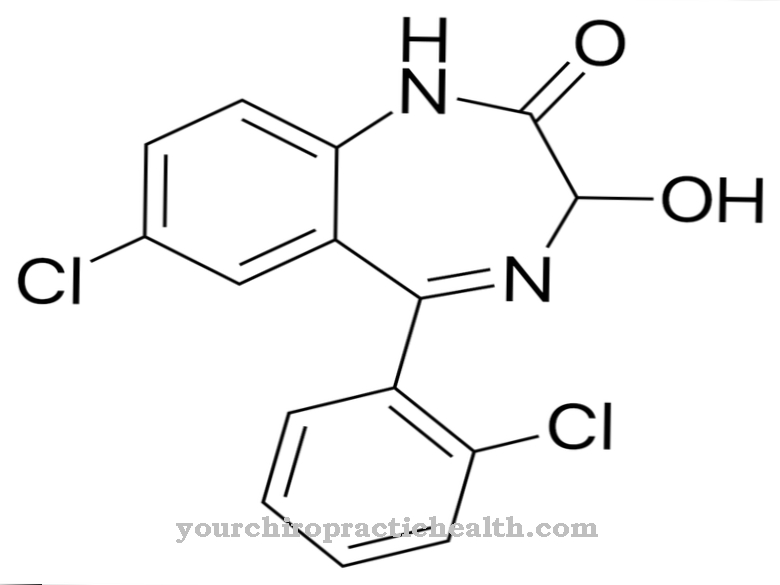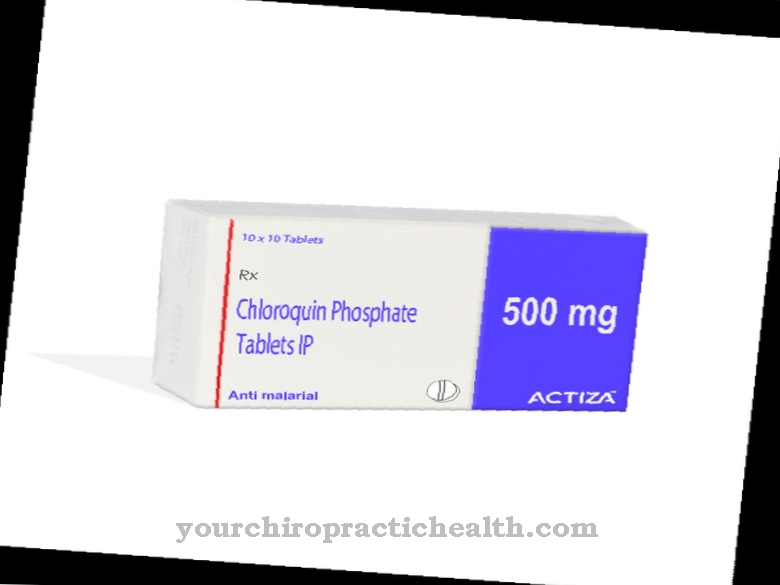At Triazolam it is a short-term benzodiazepine. The drug is usually used as a sleep aid. The active ingredient belongs to the group of benzodiazepines and is characterized by a sleep-promoting and calming effect.
What is triazolam?

The active ingredient triazolam is available on the market under the sales name Halcion®. It is an oral benzodiazepine derivative that is characterized by a short half-life. This is usually between two and five hours.
Triazolam is used as a sleep aid. The remedy works in a direct way by blocking certain regions in the brain. However, after a short period of use, both physical and psychological withdrawal symptoms are within the realm of possibility. The risk of becoming dependent on the active ingredient is therefore considerable.
In addition, triazolam is also abused as an intoxicant. For these reasons, the drug is subject to the Narcotics Act in Germany. It is considered to be marketable, but always requires a prescription. Unauthorized handling of the drug or its distribution without submitting a doctor's prescription are in principle punishable. An exception to these regulations are special preparations that do not contain any other narcotics and contain a maximum of 0.25 milligrams of triazolam.
Animal experiments have shown that the active substance is transferred relatively quickly both into the fetal circulation and into breast milk. Since the effect of triazolam sets in relatively quickly with an average absorption half-life of a quarter of an hour, dependence on the substance is promoted.
Pharmacological effect
The active substance triazolam is metabolized in the liver, while it is excreted in the urine. In principle, the active ingredient triazolam is one of the very quick and short-term acting benzodiazepines. The calming effect sets in within 15 to 30 minutes of ingestion. The subsequent sleep time is usually between six and seven hours.
In the brain, the substance triazolam binds to specific receptors that are suitable for benzodiazepines. As a result, triazolam increases the inhibiting effect of the messenger substance GABA. In this process, various associations of nerve nodes are influenced. In this way, triazolam primarily develops a sleep-stimulating and calming effect. It also shows arousal and tension-relieving as well as anti-anxiety effects.
If triazolam is taken in higher doses, it sometimes reduces muscle tension and at the same time reduces the risk of epileptic convulsions.
Since the active ingredient triazolam is a benzodiazepine, it acts as a so-called allosteric modulator on the GABA-A receptors. If the neurotransmitter GABA is present, it intensifies its effect. If more chloride ions flow into a cell, hypopolarization occurs. This makes the cell less sensitive to excitatory stimuli. Unlike barbiturates, which act on the chloride influx independently of GABA, benzodiazepines are associated with a lower risk of respiratory depression.
The drug reaches its maximum plasma concentrations between 0.6 to 2.3 hours after oral ingestion. In contrast, the plasma half-life usually fluctuates widely between 1.4 and 4.6 hours. The active ingredient is metabolized via a special hepatic system. Most of the metabolites are then eliminated renally.
Medical application & use
Triazolam is traditionally prescribed to treat insomnia. Both serious insomnias and jet lag are treated with triazolam.
In certain diagnostic procedures, such as diagnostic MRI examinations, triazolam is sometimes administered as a short-acting anxiolytic. Due to the high potential for dependence, this administration is controversial. The likelihood of paradoxical reactions is also increased.
Because of its psychoactive properties, preparations containing triazolam are misused as intoxicants. The bioavailability of triazolam when taken orally is less than 50 percent, whereas the bioavailability when ingested sublingually is over 50 percent. For this reason, preparations with triazolam work a little stronger when patients let them melt under the tongue.
Triazolam is used for the short-term therapy of severe sleep disorders. The tablets are taken just before going to bed.
You can find your medication here
➔ Medication for sleep disordersRisks & side effects
The use of triazolam can be associated with various undesirable side effects. The most common side effects include dizziness, sleepiness and impaired coordination. A drop in performance, memory disorders and restlessness are also possible. Patients may experience drowsiness, impaired balance, muscle weakness, and slow reaction times.
In addition, gastrointestinal disorders, local skin reactions and allergies sometimes occur. Confusion, exhaustion, visual disturbances and respiratory depression can also occur as consequences of taking triazolam.
The active ingredient triazolam should not be prescribed or taken in the event of hypersensitivity, severe breathing disorders, myasthenia gravis or serious mental illness. Strong CYP inhibitors, such as HIV protease inhibitors or azole antimycotics, must not be administered at the same time. Because these inhibit the metabolism of triazolam, can increase its concentration and thus trigger side effects.
Basically, triazolam should not be taken during pregnancy or while breastfeeding.



























